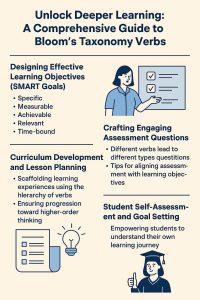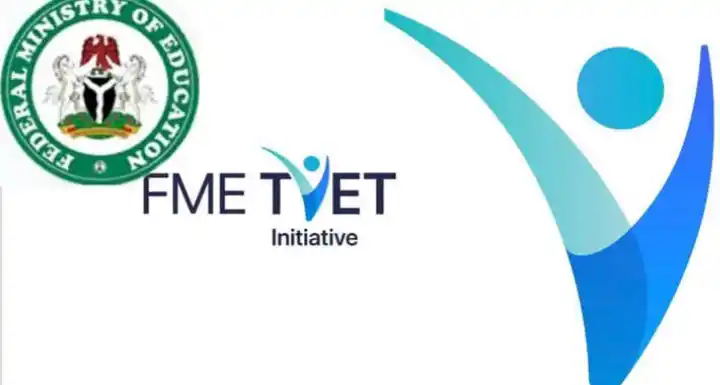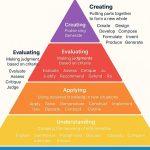
Bloom’s Taxonomy: Practical Strategies, Critiques, and Its Future in the AI Age
We’ve journeyed through the evolution of Bloom’s Taxonomy and explored each of its six cognitive levels in detail. Now, it’s time to shift our focus to the practical application of this powerful framework in real educational settings. This section provides actionable strategies, valuable resources, and direct answers to common questions, serving as your practical toolkit for mastering Bloom’s Taxonomy, addressing its critiques, and understanding its amplified relevance in the age of Artificial Intelligence.
Bloom’s Taxonomy in Practice: Empowering Educators and Learners
Understanding the six levels of Bloom’s Taxonomy is one thing; putting them into action is another. This framework acts as an invaluable blueprint for creating educational experiences that foster deeper learning and more meaningful engagement.
Designing Engaging Curricula and Lesson Plans
Bloom’s Taxonomy provides an effective framework for planning and evaluating learning outcomes, meticulously documenting the entire learning process from the initial ingestion of facts to the eventual creation of original work.
Scaffolding Learning: Building Skills Incrementally
One of the most intuitive applications of Bloom’s Taxonomy is in scaffolding learning. Its hierarchical structure naturally supports this process, where learning progresses from simpler to progressively more complex cognitive tasks. The principle is straightforward: each level builds on the one below it, meaning mastery of lower-level skills is often a prerequisite for successfully engaging with higher-level ones. This inherent progression guides the sequencing of content, ensuring that foundational knowledge is established before more complex concepts are introduced.
For example, a lesson plan might begin with “Remember” activities like lectures and readings, then move to “Understand” activities such as discussions and quizzes, followed by “Apply” tasks like demonstrations and problem sets, and so on. This structured progression is designed to ensure that students have the necessary foundational knowledge before tackling more complex tasks, thereby reducing frustration and increasing their chances of success.
However, it is important to acknowledge that while Bloom’s suggests a hierarchy, effective scaffolding isn’t always a rigid, linear progression. Learning is often a dynamic and iterative process. Sometimes, engaging in higher-level activities like “applying” or “creating” can actually deepen understanding at lower levels in a cyclical fashion. This highlights that the true power of Bloom’s lies in using the framework to intentionally design activities that reinforce and build upon each other, ensuring a dynamic and fluid learning journey, rather than a strict, one-way climb up a ladder.
Differentiating Instruction: Meeting Diverse Learner Needs
Another powerful application of Bloom’s Taxonomy is in differentiating instruction, allowing teachers to effectively meet the diverse needs of their learners. The framework enables teachers to tailor activities based on student abilities, providing foundational tasks for struggling learners while simultaneously offering challenging higher-order tasks for advanced students.
A practical approach to this is the “All/Most/Some” design. This method suggests that “All students will remember and outline the concept, most students will understand and summarize the concept, and some students will analyze and organize the concept.” This ensures that every student is engaged at a level appropriate for their current understanding and capabilities. Educators can also develop a “task bank” – a repository of activities and questions for each Bloom’s level – ready to be deployed based on individual student needs. This flexibility ensures that all students are appropriately challenged, fostering engagement and mastery at their own pace. By providing pathways for all students to engage with content at their appropriate cognitive level, educators can foster inclusive excellence, ensuring that every learner is challenged to grow.
Crafting Effective Assessments for Meaningful Feedback
Assessments, when designed with Bloom’s Taxonomy in mind, transform from mere grading exercises into powerful tools for meaningful feedback and continuous learning. Bloom’s Taxonomy is commonly used to assess learning at various cognitive levels, serving as crucial checkpoints that ensure students are reaching essential milestones in their learning journey. It helps educators measure student learning and make necessary adjustments to their teaching strategies to improve student learning outcomes.
Aligning Questions with Cognitive Levels
A key principle of effective assessment is to design exam questions and assessment items that directly align with the expected learning ability at each Bloom’s level. This means gradually introducing higher-level questions as students master lower-level objectives. The verbs used in learning objectives should directly inform the verbs used in assessment questions, ensuring that the assessment truly measures the intended cognitive skill. For example, if a learning objective states “Students will be able to explain the function of the left and right ventricle,” an assessment question might ask, “Describe the primary role of the left ventricle in the circulatory system.”
The alignment of assessment questions with Bloom’s levels creates a powerful diagnostic tool for educators. It allows them to pinpoint exactly where students might be struggling—whether it’s a fundamental recall issue, an application gap, or a challenge with critical analysis—rather than just knowing they “don’t understand.” This granular insight enables highly targeted interventions and personalized feedback, transforming assessment from a mere grading exercise into a continuous learning opportunity. Educators can analyze assessment results and readjust course objectives accordingly, using tools like ExamSoft to tag exam items to Bloom’s levels and course objectives, providing reports to pinpoint areas for improvement.
Beyond Standardized Tests: Measuring True Understanding
Traditional assessments, such as many multiple-choice questions, often focus predominantly on lower-level recall, failing to capture the nuances of deeper understanding or higher-order skills. While such assessments have their place for foundational knowledge, Bloom’s Taxonomy encourages educators to move beyond this limitation.
By designing assessments that align with various levels of the taxonomy, teachers can ensure they are not only measuring students’ recall abilities but also their analytical skills and creativity. This necessitates advocating for a variety of assessment methods that can effectively measure skills across all Bloom’s levels. These might include case studies, projects, debates, simulations, essays, and peer reviews. The focus should always be on behavioral outcomes, measuring what students can do as a direct result of instruction, rather than broad generalizations.
By moving beyond rote memorization in assessments, educators are not just measuring knowledge; they are validating the effectiveness of their teaching strategies in fostering genuine critical thinking and problem-solving skills. This approach encourages a shift from “teaching to the test”—which often means teaching to lower-order recall—to “teaching for mastery,” where the ultimate goal is deep, transferable learning. This also implicitly reduces student anxiety by showing that learning is about more than just remembering facts for an exam; it’s about developing versatile cognitive abilities. This deeper assessment approach, enabled by Bloom’s, fosters a culture of continuous improvement, where learning is seen as an ongoing process of refinement rather than a one-time acquisition of facts.
Empowering Student Self-Assessment and Goal Setting
Bloom’s Taxonomy isn’t just a tool for educators; it’s a powerful framework that can empower students to take an active role in their own learning journey, fostering self-awareness and self-direction.
Fostering Metacognition: Thinking About Thinking
One of the most significant benefits of introducing students to Bloom’s Taxonomy is its ability to foster metacognition—the invaluable process of thinking about one’s own thinking. When students understand the different levels of cognitive processing, they can reflect on their learning progress more effectively, perhaps through structured self-assessments or guided reflections. This means they can ask themselves, “Am I just remembering this fact, or can I explain it in my own words? Can I apply it to a new problem? Can I analyze its components?”
When students engage in metacognition, they are better able to transfer what they’ve learned to new contexts and situations, a highly valued skill in today’s knowledge economy. Empowering students with Bloom’s Taxonomy for metacognition transforms them from passive recipients of knowledge into active architects of their own learning. By understanding the “levels” of thinking, students can articulate their learning goals more precisely, identify their own cognitive gaps, and strategically plan how to move towards deeper understanding. This cultivates lifelong learners who are capable of independent problem-solving and continuous self-improvement, far beyond the confines of a single course. It’s about teaching them how to learn, not just what to learn.
Students as Active Participants in Their Learning Journey
When students understand the cognitive demands of each learning objective, they gain a clearer view of their learning path and the purpose of incremental assignments. This transparency makes the educational journey less mysterious and more purposeful. Bloom’s Taxonomy provides a tangible framework for students to set their own learning goals, aligning them with specific cognitive levels they aim to achieve. This shifts the dynamic from simply completing assignments to strategically working towards a desired level of mastery.
Furthermore, activities like peer reviews and discussions, guided by Bloom’s levels, allow students to learn from each other and articulate their understanding in a collaborative environment. By involving students in the Bloom’s framework, educators foster a culture of shared responsibility for learning outcomes. This collaborative approach, where students and teachers speak the same “language” of cognitive levels, builds trust and mutual understanding. It shifts the dynamic from teacher-as-deliverer to teacher-as-facilitator, and student-as-receiver to student-as-co-creator of their educational experience, promoting deeper engagement and a sense of ownership over their academic growth.
Integrating Bloom’s with EdTech Tools for Enhanced Learning
In the rapidly evolving landscape of education, technology plays an increasingly vital role. When strategically integrated, EdTech tools can significantly enhance the application of Bloom’s Taxonomy, making learning more efficient, engaging, and personalized.
Leveraging Digital Platforms for Each Cognitive Level
Learning Management Systems (LMS) offer a prime example of how digital platforms can be designed to align seamlessly with Bloom’s Taxonomy. They can host a range of activities, from simple recall quizzes for the “Remember” and “Understand” levels to discussion boards that facilitate “Analysis” and “Evaluation” among learners. Interactive elements, such as short videos followed by comprehension questions, can be integrated to support “Understanding,” while simulations can provide rich environments for “Applying” and “Analyzing” concepts.
Furthermore, digital tools are particularly powerful for supporting “Create” activities, which often involve producing tangible outputs. Platforms for creative writing, video production, graphic design, or collaborative project development can provide students with the means to synthesize new ideas and produce original work. The strategic integration of EdTech tools with Bloom’s Taxonomy can personalize the learning experience at scale. Automated quizzes for “Remember” and “Understand” levels, for instance, free up instructor time, allowing them to focus on facilitating higher-order discussions and complex projects. This blend of technology and pedagogy enables a more efficient and effective progression through cognitive levels, making deeper learning more accessible to a larger student population. For more on how digital learning platforms and LMS solutions can be optimized using these principles, explore the resources on edtechnology.com.ng.
AI’s Role in Supporting Bloom’s-Aligned Learning
The advent of Artificial Intelligence (AI) presents both new opportunities and a sharpened focus for Bloom’s Taxonomy. Generative AI tools are becoming increasingly capable of assisting with tasks that fall into the lower levels of Bloom’s Taxonomy, such as reviewing the alignment of learning objectives with course goals, refining objectives for clarity, and suggesting assessment ideas. They can also support brainstorming processes, enumerate potential drawbacks and advantages, and even create tangible deliverables based on human inputs.
By offloading these lower-order cognitive tasks to AI, students and educators can free up valuable time and mental energy. This allows them to dedicate more resources to higher-order thinking skills—those uniquely human abilities that AI cannot fully replicate. These include engaging in metacognitive reflection, holistically appraising ethical consequences of alternative courses of action, critically thinking and reasoning within complex domains, justifying analyses in depth, and applying human creativity and imagination to idea and solution development.
The rise of AI doesn’t diminish Bloom’s Taxonomy; it amplifies its relevance, particularly for the higher cognitive levels. As AI becomes more capable of handling “remembering” and “understanding” tasks, the human competitive advantage shifts decisively towards “analyzing,” “evaluating,” and “creating.” This pushes educators to deliberately design learning experiences that cultivate these uniquely human skills, preparing students for a future where critical thinking and creativity are paramount. It’s a call to re-evaluate what truly constitutes “meaningful learning” in the age of AI. Educational institutions and EdTech developers should proactively use Bloom’s Taxonomy to guide the design of learning experiences that emphasize complex problem-solving, ethical decision-making, and original creation, seeing AI as a powerful partner in this endeavor rather than a threat. For more on AI’s role in education, visit edtechnology.com.ng for articles on “AI in eLearning” or “Careers That Could Be Replaced by AI.”
Beyond the Pyramid: Addressing Critiques and Evolving Perspectives on Bloom’s Taxonomy
While Bloom’s Taxonomy has undeniably shaped modern education, it’s important to approach any framework with a critical eye. Like any powerful tool, it has its strengths, but also its limitations and areas of ongoing debate. Acknowledging these evolving perspectives allows for a more nuanced and effective application of the taxonomy in diverse learning environments.
Is Learning Truly Hierarchical? Debating the Linear Progression
The traditional depiction of Bloom’s Taxonomy as a pyramid strongly suggests a rigid, linear progression: one must master “Remembering” before moving to “Understanding,” and so on, up to “Creating.” Research indicates that “the stages are supposed to be hierarchical, with mastery of one level necessitating progression to the next.” This hierarchical view has guided curriculum development for decades, ensuring a structured approach to learning.
The Interconnectedness of Cognitive Processes
However, a significant critique challenges this strict linearity, arguing that learning is not always a simple, step-by-step process. Critics point out that the framework can give “the mistaken impression that these cognitive processes are discrete, that it’s possible to perform one of these skills separately from others.” In reality, cognitive processes are often intertwined and dynamic. For example, a student might deepen their “understanding” of a concept by “applying” it in a new situation, or the act of “creating” something original might require constant “analysis” and “evaluation” throughout the process. While it is true that to evaluate a process, one must first analyze it, and to create something new, one needs to have completed a thorough evaluation, it is also argued that one cannot truly understand a theory without putting it into practice.
This perspective suggests that Bloom’s Taxonomy is perhaps best viewed as a mental model or a lens for designing and analyzing learning, rather than a rigid, prescriptive sequence for how learning always occurs. Its value lies in providing a framework for intentionality in educational design, even if the actual cognitive process in a learner’s mind is more fluid and iterative. It helps educators think about progression and ensure opportunities for higher-order thinking, even if students might jump between levels in their own discovery process.
Learning as a Dynamic, Integrated Experience
Learning often involves a dynamic interplay of skills rather than discrete, separate steps. Frameworks, by their nature, “create artificial categories to help us organize our thinking, and those categories are rarely truly discrete in practice or the only way information can be bundled.” This means that while Bloom’s Taxonomy provides a useful structure for planning, educators should remain flexible in how students actually engage with and move between these levels during a learning activity. The emphasis for teachers should be on striving for balance and integration in their lessons, rather than strictly trying to “move up the pyramid” in every single activity. This approach acknowledges the complexity of human cognition and allows for more authentic, holistic learning experiences.
Common Misconceptions and How to Avoid Them
Despite its widespread adoption and proven benefits, Bloom’s Taxonomy is sometimes misunderstood or misapplied, leading to less effective educational practices. Acknowledging these common pitfalls can help educators use the framework more effectively.
Overemphasis on Higher-Order Thinking: The Importance of Foundation
One prevalent misconception is the idea that “higher-order thinking” is the only important aspect of learning, leading to a devaluation of foundational knowledge or “Remembering.” Some curricula and teaching mandates have mistakenly interpreted Bloom’s hierarchy to mean that teachers should always ask “higher-order” questions, potentially at the expense of ensuring students have a solid knowledge base. However, as research clearly states, “Knowledge matters. There are many learning situations where knowledge/remembering is actually the most important skill… students cannot analyze or evaluate anything if they don’t know facts and evidence.” The bottom of the pyramid is its foundation, and nothing above it is possible without a strong base of knowledge. This underscores a crucial point for educators: foundational knowledge is not “less important,” but rather essential for subsequent, more complex cognitive processes. A balanced approach that values and builds a robust knowledge base is critical.
Misapplying Bloom’s to Developmentally Inappropriate Tasks
Another common pitfall is misapplying Bloom’s Taxonomy to tasks that are developmentally inappropriate for students. Attempting to force very young children, for example, to engage in complex analytical or evaluative tasks when they lack the necessary cognitive abilities can be ineffective and frustrating for both learners and teachers. Research highlights that “Inferring and predicting are developmentally inappropriate expectations for students this young.” While children can tell stories, they may not yet be able to construct the kinds of stories that demonstrate a capacity for application or analysis based on specific knowledge. Educators must always consider the cognitive development of their students when designing learning objectives and activities, ensuring that tasks are challenging but achievable.
Mastering Bloom’s: Practical Strategies, Resources, and Your Questions Answered
The journey to mastering Bloom’s Taxonomy is continuous. For those who wish to delve deeper, a wealth of resources is available.
Best Practices for Implementing Bloom’s Taxonomy Effectively
Implementing Bloom’s Taxonomy doesn’t have to be an overwhelming overhaul. A strategic and thoughtful approach can yield significant benefits.
Start Small, Build Big: Gradual Integration
The most effective way to begin integrating Bloom’s Taxonomy is often through a phased approach. Instead of trying to implement all levels across every course immediately, consider starting with a few levels or focusing on a single course or unit, then gradually expanding. When developing learning objectives, it is important to consider the level of learners in your course. This approach makes implementation less daunting and more sustainable, allowing educators to build confidence and refine their techniques over time. It also reinforces the importance of a strong foundation; rushing to higher levels without ensuring mastery of foundational knowledge can lead to frustration and hinder deeper learning.
Collaborative Learning: Fostering Higher-Order Skills Together
Learning is inherently a social process, and collaborative environments can powerfully push students to higher cognitive levels. Group activities, such as team-based learning, debates, and peer reviews, are highly effective ways to engage students in higher-order thinking. When students work together on a project that requires them to analyze a problem, evaluate different solutions, and then create a new product, they naturally engage in complex cognitive processes.
The value of peer feedback and discussion for evaluation and analysis cannot be overstated. When students review each other’s work, they are forced to apply critical thinking skills, weigh evidence, and justify their judgments, thereby deepening their own understanding and analytical abilities. This collaborative approach fosters a dynamic learning environment where students actively construct knowledge together.
Continuous Reflection and Adjustment
Effective implementation of Bloom’s Taxonomy is not a one-time event but an iterative process. Educators are encouraged to continuously reflect on their teaching practices and adjust their approaches based on student learning and feedback. A crucial step in this process is to analyze assessment results and readjust course objectives accordingly. Tools like ExamSoft can even help educators tag exam items to Bloom’s levels and course objectives, providing detailed reports that pinpoint areas for improvement and inform curriculum adjustments. This commitment to continuous improvement ensures that Bloom’s Taxonomy remains a dynamic and effective tool, constantly refined to meet the evolving needs of learners.
Choosing the Right Verbs: A Practical Toolkit for Learning Objectives
The power of Bloom’s Taxonomy lies in its verbs. Selecting the right action verb for your learning objectives is the core tool for ensuring clarity, measurability, and alignment across your curriculum and assessments.
Action Verbs for Each Level: A Quick Reference Guide
To help you craft precise learning objectives, here is a comprehensive list of action verbs for each of the six revised Bloom’s Taxonomy levels. This serves as a practical, ready-to-use resource, drawing from various educational guides.
Bloom’s Level
Key Action Verbs
Practical Learning Objective Example
Remember
Define, List, Name, Recall, Recognize, State, Identify
Students will be able to list the chambers of the heart.
Understand
Explain, Summarize, Interpret, Paraphrase, Classify, Describe
Students will be able to explain the function of the left and right ventricle.
Apply
Apply, Use, Demonstrate, Construct, Solve, Implement, Execute
Students will be able to demonstrate how to conduct a chemical titration.
Analyze
Analyze, Compare, Contrast, Differentiate, Distinguish, Examine
Students will be able to compare the economic policies of two different countries.
Evaluate
Evaluate, Assess, Critique, Judge, Defend, Argue, Recommend
Students will be able to determine the best course of treatment for a patient based on their history.
Create
Create, Design, Compose, Invent, Develop, Formulate, Propose
Students will be able to design an original science experiment.
Avoiding Ambiguity: Ensuring Measurable Outcomes
Precision in objective writing is paramount. A critical best practice is to ensure there is only one measurable verb per learning objective. If an objective contains two actions (e.g., “define and apply”), it becomes ambiguous for assessment. What if a student can define but not apply? Have they demonstrated mastery? Each learning objective must be separate; two actions or topics must not be combined.
Furthermore, always choose verbs that accurately reflect the targeted cognitive level and are specific enough to be observable. Avoiding vague terms like “know” or “understand” ensures that your objectives are actionable and your assessments are clear, leading to more effective teaching and accurate measurement of student learning.
Resources for Deeper Dive and Ongoing Learning
The journey to mastering Bloom’s Taxonomy is continuous. For those who wish to delve deeper, a wealth of resources is available.
Recommended Readings and Online Tools
For a more academic exploration of the revised taxonomy, consider works by D. R. Krathwohl, one of Bloom’s original collaborators and a key figure in the 2001 revision. Numerous online resources and templates are also available to assist in applying Bloom’s Taxonomy, such as the Bloom’s Taxonomy Resource or tools like the Bloom’s Wheel. For educators looking to tag assessment items to Bloom’s levels and track student progress, platforms like ExamSoft and Gradescope can be invaluable.
Beyond Bloom’s, a broader understanding of educational technology can significantly enhance its application. Explore other relevant articles on edtechnology.com.ng for insights into digital learning platforms, AI in eLearning, and various teaching strategies.
Connecting with the EdTech Community
Learning is often enriched through collaboration and shared experiences. Engage with the broader EdTech community through forums, webinars, and social media groups. Sharing your experiences, asking questions, and learning from peers can provide invaluable support and new perspectives on applying Bloom’s Taxonomy in innovative ways. This community engagement ensures that your learning journey remains dynamic and connected to the latest trends and best practices in educational technology.
Your Questions Answered: Bloom’s Taxonomy FAQs
Here, we address some of the most common questions people ask about Bloom’s Taxonomy, drawing from frequently searched queries.
Q: What is Bloom’s Taxonomy?
A: Bloom’s Taxonomy is a widely recognized framework that classifies educational learning objectives into different levels of cognitive complexity. It helps educators design curricula, lessons, and assessments by providing a structured way to think about how students learn and what they are expected to achieve.
Q: What are the levels of Bloom’s Taxonomy?
A: The revised Bloom’s Taxonomy (2001) consists of six levels, moving from lower-order to higher-order thinking skills:
- Remember: Recalling facts and basic concepts.
- Understand: Explaining ideas or concepts; constructing meaning.
- Apply: Using information in new situations.
- Analyze: Breaking information into parts; drawing connections.
- Evaluate: Judging value based on criteria and standards.
- Create: Producing new or original work.
Q: Why are Bloom’s Taxonomy verbs important?
A: Bloom’s Taxonomy verbs are crucial because they transform abstract learning goals into concrete, measurable, and observable actions. They clearly state what students must do to demonstrate learning, which directly guides how assessments should be designed and what specific skills are being targeted.
Q: How do I write learning objectives using Bloom’s Taxonomy verbs?
A: To write effective learning objectives, start by identifying the desired cognitive level for your students. Then, select a single, strong action verb from that level that describes an observable behavior. Combine this verb with the specific content or skill students will learn. For example, instead of “Students will know about photosynthesis,” write “Students will be able to describe the process of photosynthesis” (Understand) or “Students will be able to design an experiment to measure photosynthesis rates” (Create).
Q: What are some practical examples of Bloom’s Taxonomy in action?
A: Some Bloom’s taxonomy practical examples sre
- Remember: Listing the planets in order.
- Understand: Explaining the main idea of a story in your own words.
- Apply: Solving a math word problem using a learned formula.
- Analyze: Comparing and contrasting two different literary characters.
- Evaluate: Judging the effectiveness of a marketing campaign.
- Create: Designing a new product to solve a common problem.
Q: How does Bloom’s Taxonomy help students learn deeper?
A: Bloom’s Taxonomy encourages deeper learning by guiding students through a progression of cognitive skills, from basic recall to complex creation. By building on foundational knowledge, it pushes learners to engage in higher-order thinking, such as critical analysis and evaluation, and fosters metacognition—the ability to think about one’s own learning process, which is essential for transferring knowledge to new contexts.
Q: What are common mistakes when using Bloom’s Taxonomy?
A: Common mistakes include overemphasizing higher-order thinking at the expense of foundational knowledge, which is crucial for building complex skills. Another error is applying developmentally inappropriate tasks to young children, expecting cognitive abilities they haven’t yet developed. Lastly, viewing learning as a strictly linear process rather than an integrated and dynamic experience can limit its effectiveness.
Q: How can Bloom’s Taxonomy be used with EdTech or AI?
A: EdTech tools, like Learning Management Systems (LMS), can be designed to support activities at all Bloom’s levels, from automated quizzes for “Remember” to discussion boards for “Analyze” and “Evaluate.”AI can assist with lower-order tasks (e.g., refining objectives, suggesting assessments), freeing up human educators and learners to focus on higher-order, distinctly human skills like critical thinking, ethical appraisal, and creative problem-solving. This amplifies Bloom’s relevance in preparing students for an AI-driven future.
Conclusion
Bloom’s Taxonomy, in its original and especially its revised form, stands as a timeless and indispensable framework for understanding and enhancing the learning process. It provides a common language for educators, a clear roadmap for curriculum design, and a powerful tool for crafting meaningful assessments. By shifting the focus from abstract nouns to actionable verbs, the revised taxonomy has made learning objectives more measurable and transparent, empowering both teachers and students to navigate the educational journey with greater clarity and purpose.
While critiques highlight the non-linear nature of real-world learning and the potential for misapplication, these discussions only serve to deepen our understanding of the framework’s nuances. In the age of Artificial Intelligence, Bloom’s Taxonomy’s relevance is amplified, as it provides a crucial guide for cultivating the distinctly human higher-order cognitive skills—analyzing, evaluating, and creating—that will remain paramount in an evolving technological landscape. By embracing Bloom’s Taxonomy with flexibility, continuous reflection, and strategic integration with EdTech, educators can unlock the full learning potential of every student, preparing them not just for academic success, but for a lifetime of critical thinking, creativity, and adaptability.








